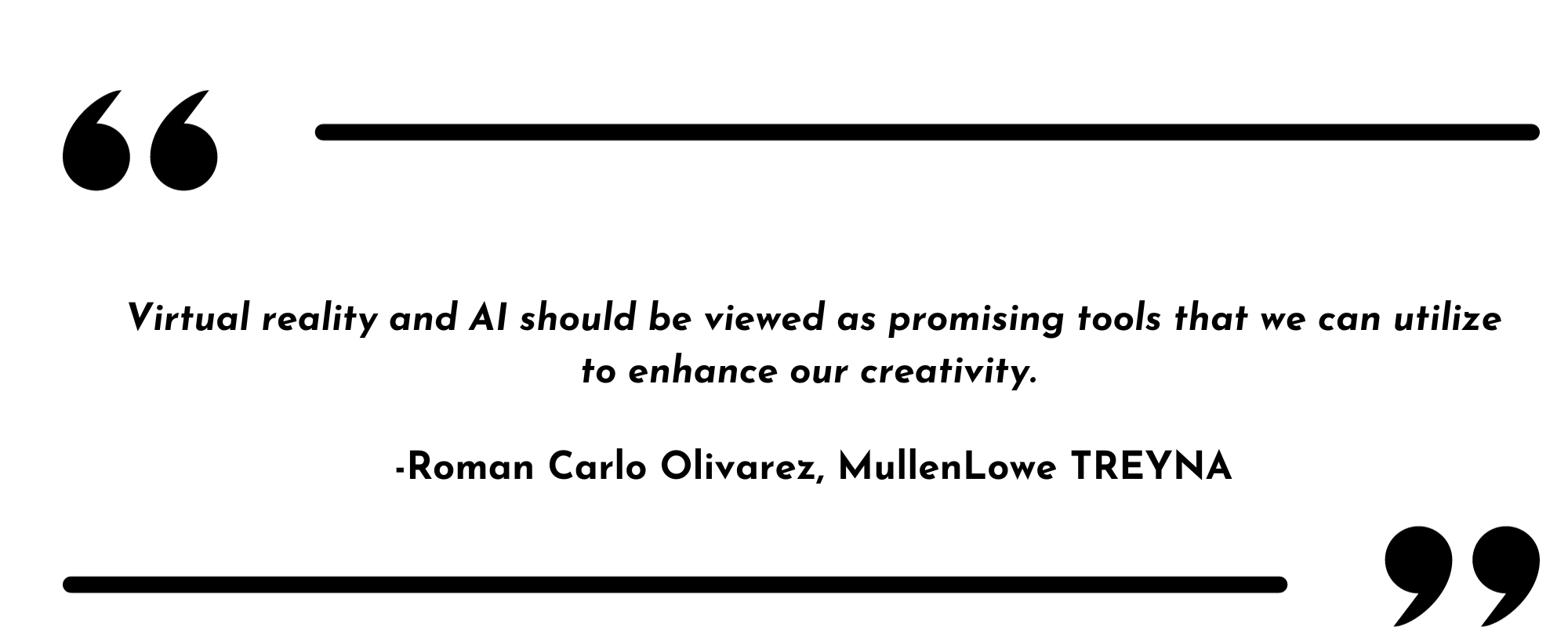Roman Olivarez: From Films to Ads, A Creative Journey with MullenLowe TREYNA
Meet Roman Carlo Olivarez, the award-winning Executive Creative Director at MullenLowe TREYNA, Philippines. Formerly rooted in TV and Film production, Roman’s diverse creative journey spans roles as a cinematographer, director, producer, writer, and even a child star. His extensive accolades include Cannes Lions, Spikes Asia, WARC, and more. Beyond advertising, Roman has made his mark in film festivals like Cinemalaya Philippine Independent and Cinema One Originals.
In this exclusive and candid interview, delve into the insights and creative brilliance of this multifaceted industry trailblazer.
Can you tell us about your journey from TV and film production to advertising? What inspired you to make this transition?
Six years into my TV and film production career, I completed my first full-length film with support from Cinema One Originals. A colleague from a freelance project then approached me with an interesting proposition to join an advertising agency. Intrigued by the prospect of creating iconic TV commercials, I decided to seize the opportunity. Thankfully, I’m still in the game, passionately crafting ads and relishing the experience.

Could you share some insights into the award-winning campaigns you’ve worked on and would you highlight your favorite campaign? What were the key factors that contributed to their success?
An award-winning campaign always serves a purpose, whether it’s to evoke emotions, encourage action and participation, or advocate for what is right.
My recent favorite campaign is our collaboration with the Quezon City government on the Right to Care card (RTC). As we are aware, the Philippines is among the last countries globally that does not recognize same-sex unions. This lack of recognition means that long-time partners are denied the right to make medical decisions and provide care for each other. In response, we devised a solution to bridge this legal gap—the RTC card. This pocket-sized special power of attorney serves as proof for LGBTQIA+ couples to be acknowledged as the next-of-kin of the patient in hospitals. The response has been overwhelming, with hundreds of couples now equipped with RTC cards. Other cities are joining forces to bring this initiative to their communities. What stands out to me in the success of this campaign is our ability to find a creative solution, ultimately transforming lives for the better.
Here is one of the news pickups we got for the campaign.
Can you share your thoughts on the current advertising landscape in the Philippines and any trends or opportunities you see for the industry in the near future that you also incorporate in your work?
The rise of Generative AI is a noteworthy trend, and its potential as a substantial opportunity depends on how the industry embraces it. The remarkable possibilities of using data intelligently and creatively are evident in the initial executions. I’m eager to see how generative AI will redefine our constantly evolving industry.

With the rapid evolution of technology, including AI and virtual reality, how do you envision the role of creativity in advertising changing in the coming years?
Virtual reality and AI should be viewed as promising tools that we can utilize to enhance our creativity. Recall the shift from film to digital photography or the transition from literal presentation boards to desktop computers. These innovations propelled creativity forward by simplifying the industry’s focus on the power of the idea and introducing new avenues for delivering ideas in innovative ways.
Given your background in TV and film, do you see any unique storytelling techniques or approaches from those industries that you’ve successfully applied to your advertising work?
Storytelling forms the basis of effective communication. My prior experience played a crucial role in my shift to branded storytelling. Discovering that golden insight that makes you exclaim, “wow, that’s surprisingly true!” is key because exceptional stories always evoke that “aha” moment while maintaining a quietly relatable essence.
What is the most unconventional or out-of-the-box idea you’ve ever pitched to a client, and how did they react? Did it ultimately become a successful campaign?
One of the unconventional approaches we took was using the ghosts of Filipino national heroes to inspire voter registration. When this idea was shared during our brainstorming session, I immediately knew it was the one. (*laughs*)
It stemmed from the insight that registering to vote is actually easy, something one should do for the country. However, despite the simplicity, people still don’t. So, we employed a guilt-tripping approach through our late heroes—the ones who sacrificed their lives for the freedom of the entire nation. The results of the campaign were astounding, even surpassing the KPI for newly registered voters, totaling 5.9 million.
Finally, what is the most exciting or innovative project you’re currently working on at MullenLowe Treyna, and what can we expect from you and your team in the near future?
Exciting developments are underway, and as usual, much of it is under wraps. Haha! So, people can anticipate more projects from us featuring inherently creative solutions. We approach client business challenges with the mindset of “positive dissatisfaction,” which serves as our guiding principle. Here’s hoping it makes a positive impact on the world or simply adds a bit more fun, one campaign at a time.


